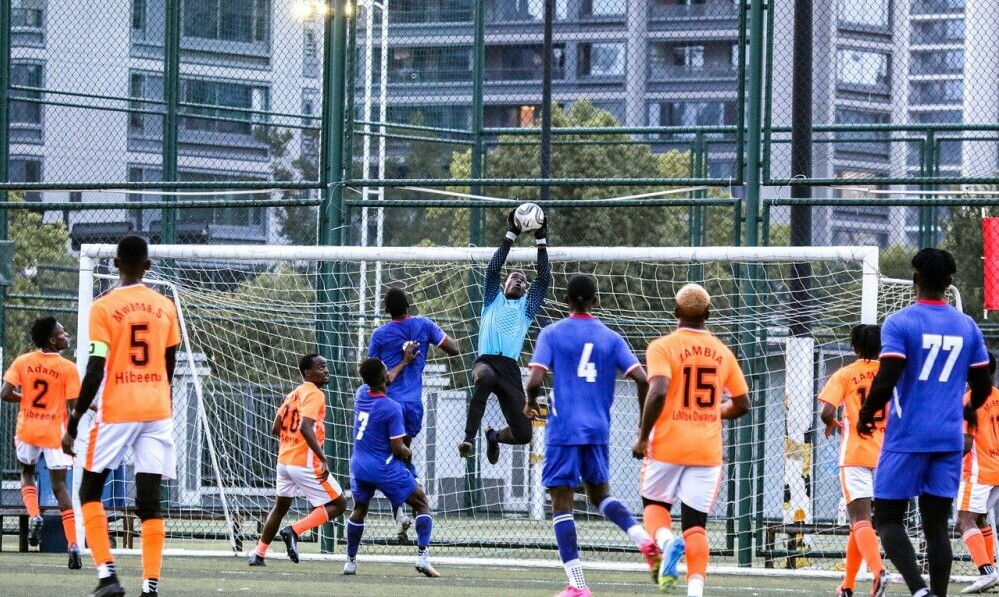 Team pressing and high-press strategies have become game-changers in modern soccer. These tactics transform the way teams regain possession and control the game. But what exactly does team pressing mean? It’s all about coordinated, collective effort to pressure the opponent and win back the ball as quickly as possible. High-pressing takes this to another level by doing it closer to the opponent’s goal, targeting their build-up play right from their defense.
Team pressing and high-press strategies have become game-changers in modern soccer. These tactics transform the way teams regain possession and control the game. But what exactly does team pressing mean? It’s all about coordinated, collective effort to pressure the opponent and win back the ball as quickly as possible. High-pressing takes this to another level by doing it closer to the opponent’s goal, targeting their build-up play right from their defense.
Thinking back, these strategies weren’t always the norm. Historically, soccer emphasized a more passive approach, focusing on defensive solidity over aggressive ball recovery. It wasn’t until the late 20th century that pressing strategies started making waves. Pioneers like Johan Cruyff and his ‘Total Football’ concept, and Jurgen Klopp’s ‘Gegenpressing’, redefined how teams thought about defense and ball recovery. Their influence reshaped soccer tactics and laid the groundwork for the high-pressing game we see today.
So, why are these strategies so important? At the core, team pressing and high-press are about disrupting the opposition’s rhythm and forcing errors. This not only helps in winning back possession but also creates goal-scoring opportunities. The intensity and coordination required mean every player knows their role, from attackers to defenders, working in sync to achieve common objectives. It’s a testament to teamwork and preparation, showing that soccer is truly a collective sport.
Implementing a pressing strategy isn’t just about the physical aspect; it’s also a psychological game. Teams that press well are typically hyper-aware, constantly reading the game and anticipating the opponent’s moves. This kind of mindset is cultivated through extensive training and a deep understanding of pressing nuances. It’s about making smart decisions under pressure and reacting to the ever-changing dynamics of the game.
Tactical Framework and Execution
Understanding different pressing systems is key. There are three main types: man-oriented, zonal, and hybrid. Man-oriented pressing is where each player focuses on an opposing player, ensuring they have no space to operate. Zonal pressing involves covering specific areas of the field and moving as a unit. Hybrid systems mix elements of both, adapting based on the flow of the game.
Every player on the field has a specific role in pressing. Forward players often lead the charge, pressuring defenders and goalkeepers to force hurried decisions. Midfielders follow up, ready to intercept any loose balls or passes, while defenders step up, shrinking the space in their half of the field. Goalkeepers, too, play a part, acting almost as sweepers to clear long balls.
To successfully disrupt the opponent’s build-up play, sharpness and timing are crucial. Players need to know when to press and when to hold their positions to avoid being bypassed. The first line of press targets the players initiating the attack, usually the central defenders and defensive midfielders. This limits their passing options and increases the chance of forced mistakes.
Proper execution of pressing strategies requires seamless communication and situational awareness. Teammates must read each other’s movements and cover each other effectively. A lapse in concentration can easily be exploited, allowing the opposition to break the press and create scoring opportunities.
A carefully coordinated team press can turn defense into attack in an instant. Winning the ball high up the pitch not only puts the opponent on the back foot but also gives immediate access to the attacking third. This fast transition is vital for capitalizing on the opponent’s disorganization and creating goal-scoring chances.
Benefits and Challenges of High-Press Strategies
High-press strategies offer several advantages. By applying pressure high up the pitch, teams can force turnovers closer to the opponent’s goal, creating immediate scoring opportunities. This approach exploits the opposition’s errors and forces them to play under constant stress, which can greatly impact their overall performance and morale.
High-pressing can dictate the tempo of the game. When applied effectively, it forces opponents to play hurriedly, often disrupting their game plan. Teams using high-press can control the pace, making the game fast-paced and physically demanding. This can be particularly useful against teams that prefer a slower, possession-based style of play.
Despite the benefits, high-press strategies come with their own set of challenges. One of the biggest risks is the physical toll it takes on players. Maintaining high-intensity pressing requires remarkable stamina and fitness levels. Players need to be in top shape to sustain this pressure throughout the match, which isn’t always feasible over a long season.
Another significant challenge is the potential for defensive vulnerability. If the press is broken, it can leave large spaces open in the team’s defensive structure. Quick, savvy opponents can exploit these gaps with well-timed counter-attacks. This makes tactical discipline and quick recovery essential.
Case studies offer great insights into the risks and rewards of high-pressing. Jurgen Klopp’s Liverpool is often highlighted for their adept use of Gegenpressing. Their success showcases the effectiveness of high-press strategies when executed with precision. On the flip side, teams like Marcelo Bielsa’s Leeds United sometimes struggle with defensive lapses, illustrating the fine line between aggressive press and defensive compromise.
Balancing the intensity of the press with the need to stay defensively sound is a considerable challenge. Teams looking to employ high-press strategies need to train rigorously and emphasize tactical awareness. Understanding when to press aggressively and when to fall back is crucial for minimizing risks and maximizing benefits.
Training and Implementation
Training for high-press strategies requires a mix of physical conditioning and tactical drills. Players need to build endurance and increase their explosive speed to maintain pressure throughout the match. Interval training and high-intensity drills are great for this purpose, ensuring that players can sustain the press for extended periods.
Tactical awareness is another critical aspect. Players must understand the timing and triggers for pressing. Drills that simulate match scenarios where players must decide when to press and when to hold back are essential. These drills should emphasize communication and teamwork, as successful pressing relies on a unified effort.
Coaches play a significant role in instilling a high-press mentality in their teams. They need to foster a culture of relentless effort and quick decision-making. This can be done through regular feedback sessions, video analysis, and reinforcing the importance of pressing in both training and matches. Coaches should also adapt their strategies based on the strengths and weaknesses of their squad and the opposition.
Flexibility in adapting the high-press strategy is vital. Not all teams will have the same level of fitness or tactical understanding. Adjusting the press to suit the playing style and capabilities of the team is key. Some teams may benefit from a more measured press, focusing on specific moments in the game to apply pressure.
